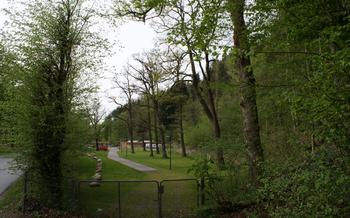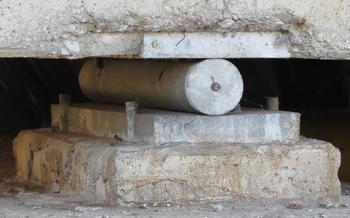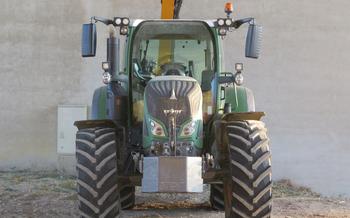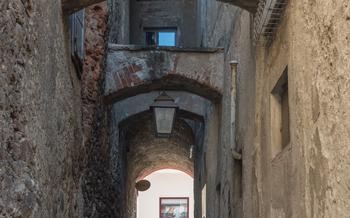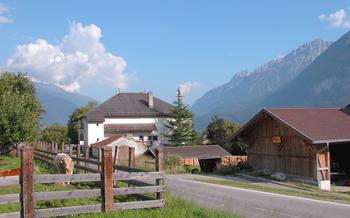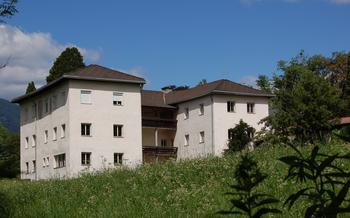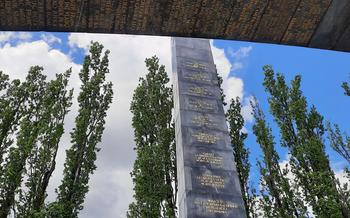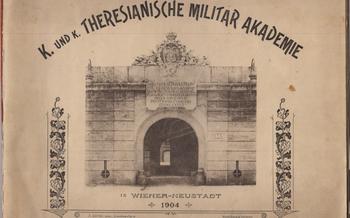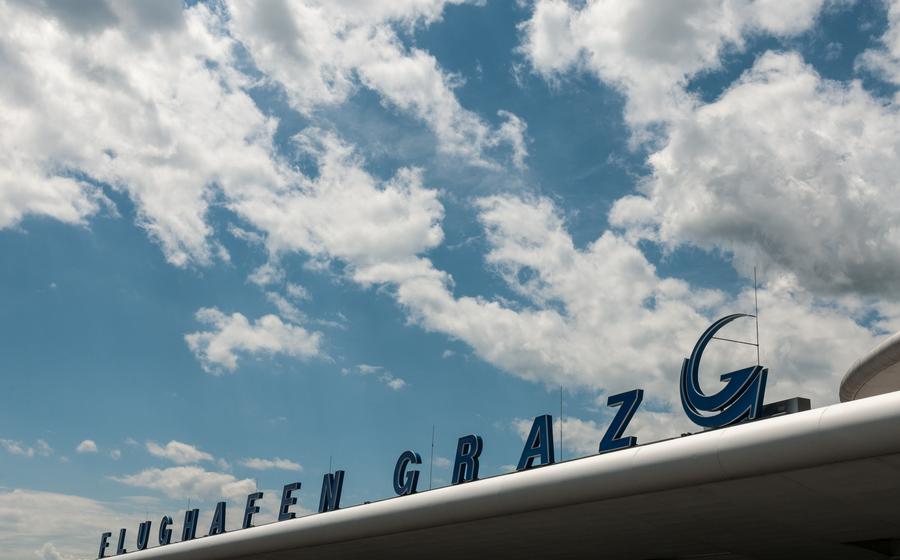
Roman Quarry Flavia Solva
- A Journey Through Time in Graz
- Unveiling the History of Flavia Solva
- Exploring the Archaeological Park
- Mosaics: A Masterpiece of Roman Art
- The Amphitheater: Echoes of Ancient Spectacles
- Thermal Baths: A Sanctuary of Relaxation
- The Temple District: A Center of Worship
- Flavia Solva Museum: A Treasure Trove of History
- Walking Through History: Guided Tours
- Interactive Activities for Families
- Events and Festivals
- Souvenirs and Local Delicacies
- Accessibility and Facilities
- Planning Your Visit
- Insider Tip: Unraveling the Secrets of the Flavia Solva Necropolis
A Journey Through Time in Graz
Flavia Solva: A Glimpse into Roman Austria
Graz, the vibrant capital of Styria, Austria, is not only renowned for its modern architecture and cultural scene but also holds a hidden treasure from the ancient Roman past. Just a short drive from the city center lies Flavia Solva, an archaeological park that offers a fascinating glimpse into the life and times of the Roman Empire. This historical site, dating back to the 1st century AD, invites visitors on a journey through time, revealing the rich legacy of Roman influence in the region.
As you step into Flavia Solva, you'll be greeted by the impressive remains of a once-thriving Roman city. Architectural remnants, including sturdy walls, cobblestone streets, and the foundations of public buildings, stand as testaments to the grandeur of this ancient settlement. Excavated artifacts, such as pottery, coins, and tools, add depth to the story, providing tangible evidence of the daily lives of its Roman inhabitants.
Flavia Solva's significance extends beyond its physical remains. Museums and exhibitions within the archaeological park showcase the treasures unearthed during excavations, offering a deeper understanding of Roman culture and history. These exhibits provide insights into the city's role as a military camp, a trading hub, and a center of religious worship, bringing to life the diverse aspects of Roman society that flourished here centuries ago.
Unveiling the History of Flavia Solva
Flavia Solva's history dates back to the 1st century AD when the Roman Empire established a military camp in the region. This camp, known as Flavia Solva, quickly grew into a thriving city, becoming an important trade and commerce center along the Roman trade routes. The city's strategic location at the crossroads of several major roads contributed to its economic prosperity. Flavia Solva served as a vital hub for the exchange of goods, ideas, and cultures between the Roman Empire and the surrounding regions.
The city's diverse population included Roman soldiers, merchants, artisans, and farmers, each contributing to its vibrant and cosmopolitan atmosphere. Flavia Solva's inhabitants enjoyed a relatively high standard of living, evidenced by the well-preserved remains of their homes, public buildings, and infrastructure. The city's prosperity also attracted notable historical figures, including Roman emperors and military leaders who visited Flavia Solva for official ceremonies and military campaigns.
Exploring the Archaeological Park
Flavia Solva's transformation into an archaeological park invites visitors to step into the past and witness the remnants of a once-thriving Roman city. The park is a treasure trove of architectural wonders, where the ruins of city walls, streets, and public buildings stand as silent testaments to the grandeur of Roman engineering. Excavated temples, baths, and workshops offer a glimpse into the daily lives of the city's inhabitants, revealing their customs, craftsmanship, and way of life. Interactive displays and information panels enhance the visitor experience, bringing the stories of Flavia Solva to life. Stroll along the ancient streets, marvel at the intricate mosaics that adorn the floors, and let your imagination transport you back to a time when Roman soldiers marched through these very grounds.
Mosaics: A Masterpiece of Roman Art
Flavia Solva boasts a remarkable collection of mosaics, stunning works of art that transport visitors back to the era of Roman craftsmanship. These intricate designs, composed of tiny tesserae (small pieces of colored stone or glass), adorn the floors of various buildings throughout the archaeological park.
One of the most captivating mosaics depicts a lively scene of a chariot race, with four galloping horses and their charioteers competing for victory. The vivid colors and attention to detail bring the scene to life, allowing visitors to imagine the excitement and adrenaline of the ancient races.
Another mosaic showcases a mythical creature, a griffin with the body of a lion and the head and wings of an eagle. Its majestic presence and intricate features symbolize strength and power, representing the Roman Empire's military prowess.
The symbolism and storytelling embedded in these mosaics provide valuable insights into Roman mythology, religion, and daily life. They depict scenes from Roman legends, mythological creatures, and everyday activities, offering a glimpse into the minds and beliefs of the ancient inhabitants of Flavia Solva.
The techniques used to create these exquisite works of art are equally impressive. The mosaicists employed the opus tessellatum technique, meticulously arranging small tesserae to form intricate patterns and figures. This painstaking process required immense skill and patience, resulting in the breathtaking masterpieces that can be admired today.
The Amphitheater: Echoes of Ancient Spectacles
At Flavia Solva, history echoes through the stones of its impressive amphitheater, a monument to the grandeur and entertainment of Roman times. Built to accommodate the city's population for various spectacles, the amphitheater stands as a testament to the Romans' passion for entertainment and communal gathering.
With a seating capacity of approximately 5,000 spectators, the amphitheater's design ensured optimal viewing angles for all. Its elliptical shape allowed for a close and immersive experience, drawing spectators into the heart of the action. The tiered seating, divided into sections based on social status, reflected the hierarchical structure of Roman society.
The amphitheater served as a stage for gladiatorial combats, a brutal and bloody spectacle that captivated Roman audiences. Gladiators, often slaves, criminals, or prisoners of war, fought each other or wild animals for the entertainment of the masses. The contests were fierce and often deadly, with the victors hailed as heroes and the vanquished mourned as martyrs.
Beyond gladiatorial combat, the amphitheater hosted a variety of other entertainments. Public executions, animal hunts, and theatrical performances filled the air with excitement and spectacle. The amphitheater was a place where the Romans could escape the mundane and immerse themselves in a world of thrilling entertainment and communal fervor.
Thermal Baths: A Sanctuary of Relaxation
Flavia Solva's Roman baths, meticulously preserved within the archaeological park, offer a glimpse into the ancient world's bathing culture. These well-designed structures consisted of distinct sections, each catering to different temperature preferences. The frigidarium, with its chilly plunge pool, provided a refreshing contrast to the tepidarium's warm ambiance. The caldarium, the hottest chamber, enveloped bathers in soothing steam, promoting relaxation and rejuvenation.
Beyond their practical function, the Roman baths held deep social significance. They served as communal spaces where people from all walks of life could socialize, exchange news, and engage in leisurely activities. The baths were also closely intertwined with religious rituals, as offerings to deities were often made within their sacred precincts.
The advanced plumbing and heating systems employed in Flavia Solva's baths showcase the Romans' engineering prowess. Aqueducts supplied a continuous flow of fresh water, while underfloor heating ensured a comfortable bathing experience even during the coldest months. These intricate systems attest to the Romans' commitment to hygiene, comfort, and overall well-being.
The Temple District: A Center of Worship
Flavia Solva's sacred spaces offer a glimpse into the religious beliefs and practices of the Roman inhabitants. Within the archaeological park, visitors can explore the remains of several temples dedicated to various deities. These temples, though in ruins, still exude an aura of reverence and spirituality.
One of the most prominent temples is dedicated to Jupiter, the king of the Roman gods. Its imposing size and elaborate architectural features suggest its importance in the religious life of Flavia Solva. The Temple of Minerva, the goddess of wisdom, is another significant structure. Its well-preserved remains showcase intricate carvings and decorative elements.
Other temples within the district include those dedicated to Mercury, the god of trade and travel, and Venus, the goddess of love and beauty. Each temple served as a center for religious rituals, offerings, and festivals, reflecting the diverse beliefs and practices of the Roman community.
Exploring the temple district is a journey through the spiritual realm of Flavia Solva. Visitors can imagine the solemn processions, prayers, and sacrifices that once took place within these sacred spaces. The temples stand as testaments to the deep religious devotion and rich cultural heritage of the ancient Roman city.
Flavia Solva Museum: A Treasure Trove of History
The Flavia Solva Museum, situated within the archaeological park, serves as a repository of the site's rich historical legacy. This treasure trove of knowledge and artifacts offers visitors an immersive journey through the annals of Roman life in Flavia Solva.
The museum houses an impressive collection of artifacts unearthed during excavations, providing tangible evidence of the city's past. From pottery shards and tools to exquisite jewelry and coins, each artifact tells a unique story of daily life in Roman times. Interactive exhibits and multimedia presentations enhance the museum experience, allowing visitors to engage with history in a dynamic and engaging manner.
Educational programs and workshops offered at the museum cater to visitors of all ages, fostering a deeper understanding of Roman culture and history. Children can participate in hands-on activities such as pottery classes and mosaic workshops, while adults can delve into specialized lectures and thematic exhibitions. The Flavia Solva Museum is a must-visit for anyone seeking to unravel the mysteries of this ancient Roman city.
Walking Through History: Guided Tours
Unveil the Secrets of Flavia Solva with Knowledgeable Guides
Flavia Solva offers guided tours to enhance your exploration of this ancient Roman city. Led by experienced and knowledgeable guides, these tours provide a deeper insight into the archaeological findings and the site's historical significance.
Join a guided tour to discover the secrets of Flavia Solva and immerse yourself in the Roman era. Listen to captivating stories about the people who lived here, the events that shaped their lives, and the legacy they left behind.
Thematic tours are also available, focusing on specific aspects of Roman life and culture. Whether you're interested in the military history of Flavia Solva, the daily lives of its inhabitants, or the religious practices of the Romans, there's a tour tailored to your interests.
To make the most of your visit, consider booking a guided tour in advance. Group discounts are available, making it an affordable option for families and groups of friends.
Insider Tip:
- Join the "Gladiators and Chariots" tour to experience the thrill of ancient Roman spectacles. Learn about the gladiatorial contests and chariot races that took place in the amphitheater and imagine the roar of the crowd as the competitors battled for victory.
Interactive Activities for Families
Flavia Solva offers a range of interactive activities and educational programs tailored for families with children. These activities aim to engage young minds in learning about Roman history and culture in a fun and immersive way.
Hands-on experiences, such as mosaic workshops, pottery classes, and guided tours, allow children to actively participate in the exploration of Roman life. These workshops provide a unique opportunity for kids to create their own Roman-inspired artwork, using traditional techniques and materials.
Interactive displays and games throughout the archaeological park enhance the learning experience for children. These interactive elements bring history to life, making it more relatable and engaging for young visitors. Storytelling sessions and theatrical performances transport children back in time, immersing them in the world of ancient Rome.
Through these interactive activities, Flavia Solva becomes a place where families can bond, learn, and create memories together while exploring the fascinating history of the Roman Empire.
Events and Festivals
Flavia Solva comes alive with a variety of events and festivals throughout the year, offering visitors a chance to experience Roman culture and traditions firsthand. Historical reenactments transport visitors back in time, showcasing the daily lives, battles, and customs of the Roman inhabitants. Roman-themed markets add to the immersive experience, featuring stalls selling authentic Roman goods, pottery, and local delicacies. Cultural performances, such as plays, dances, and music concerts, showcase the vibrant artistic heritage of the Roman era. Special events during summer months and holidays provide a festive atmosphere, with themed activities, workshops, and entertainment for visitors of all ages.
Souvenirs and Local Delicacies
At Flavia Solva, you can shop for unique souvenirs to remember your visit. The gift shop offers a wide range of items, including replicas of Roman artifacts, jewelry, pottery, and books on Roman history. You can also find locally produced delicacies inspired by Roman cuisine at nearby restaurants. Sample olive oil, cheese, bread, and wine made in the region, savoring the flavors of ancient Rome. Participate in culinary workshops to learn about Roman cooking techniques and recreate these dishes at home.
Accessibility and Facilities
Flavia Solva is dedicated to ensuring that everyone can enjoy its historical treasures. The archaeological park features wheelchair-accessible routes, ramps, and designated parking areas, making it easy for visitors with disabilities to explore the site. Guided tours and educational materials are available in multiple languages, allowing visitors from different backgrounds to learn about the Roman past of Graz. A visitor center offers restrooms, a cafe, and a playground for children, providing a comfortable and welcoming environment for families. With its commitment to accessibility and inclusivity, Flavia Solva invites all visitors to step back in time and discover the wonders of the Roman world.
Planning Your Visit
Before embarking on your journey to Flavia Solva, it's essential to plan your visit to ensure a smooth and enriching experience. Here's a comprehensive guide to help you make the most of your trip:
-
Operating Hours: Flavia Solva is open to the public from Tuesday to Sunday during regular business hours. Visitors are advised to check the official website or contact the visitor center for specific opening times, as they may vary seasonally.
-
Ticket Prices: Admission to Flavia Solva requires a ticket, which can be purchased at the visitor center. Prices vary depending on age groups and concessions, so it's recommended to inquire about discounts or special offers.
-
Seasonal Variations: Flavia Solva's charm and experience change with the seasons. During warmer months, visitors can enjoy outdoor exploration, guided tours, and special events. In winter, the site offers a unique perspective with snow-covered ruins and cozy indoor exhibitions.
-
Transportation: Public transportation is a convenient option to reach Flavia Solva. Buses and trains connect the site with the city of Graz and surrounding areas. Alternatively, visitors can drive to the archaeological park, and ample parking is available nearby.
-
Accommodation and Dining: Flavia Solva's proximity to Graz provides a range of accommodation options, from budget-friendly hostels to comfortable hotels. Local restaurants serve delicious cuisine, including traditional Austrian dishes and Roman-inspired culinary creations.
By planning ahead and considering these practical details, visitors can optimize their time at Flavia Solva, ensuring a memorable and enriching experience in this ancient Roman city.
Insider Tip: Unraveling the Secrets of the Flavia Solva Necropolis
Venture beyond the boundaries of the archaeological park to uncover the hidden gem of the Flavia Solva necropolis. This ancient Roman cemetery, situated just outside the park's perimeter, offers a unique glimpse into the burial practices and funerary customs of the Roman inhabitants. Stroll among the rows of stone markers and explore the various types of tombs, ranging from simple graves to elaborate family mausoleums. Discover the stories behind the deceased through the inscriptions and symbols etched into the tombstones, providing insights into their lives and legacies. Immerse yourself in the atmosphere of this sacred site and gain a deeper understanding of Roman attitudes towards death and the afterlife.

